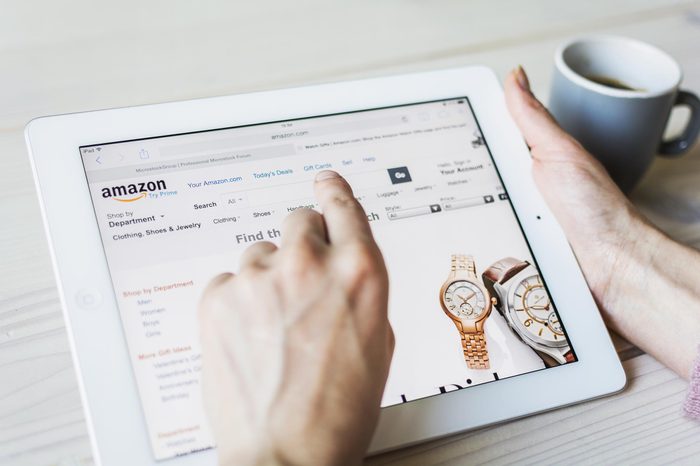
Beware of shady sellers on Amazon
Amazon has been around for more than two decades, and as we all know, it has become the largest online retailer by a mile. But a recent Wall Street Journal investigation of 4,152 items on the site found that what you see isn’t always what you get. Not all Amazon sellers are on the up-and-up, and the products you’re purchasing may be unsafe, mislabeled, banned, or just not at all what you were originally promised. In fact, that study found more than half of those items were problematic for a variety of the aforementioned reasons. So, how can you sort out the good from the bad? Here are the clues that can help you spot a deceptive Amazon seller before they scam you. And while you’re at it, check out these other online scams you also need to be aware of.
Get Reader’s Digest’s Read Up newsletter for more scams, cleaning, travel, tech and fun facts all week long.
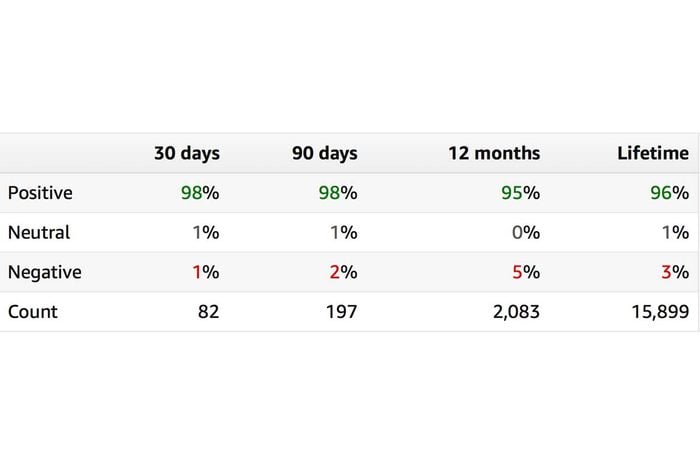
Start with the seller feedback
People who’ve dealt with a seller often want to share their experiences, especially if those experiences were very positive or very negative. That’s why you should look at the seller’s feedback before purchasing an item. “If they’re anything below 90 percent positive in the past 30 days, then find another seller for the item you’re looking to buy on Amazon,” says Josh Kreitzer, CEO of Channel Bakers, the first Amazon-focused advertising agency.
Here’s how you can check out an Amazon seller’s recent history with customers: On the product page, find the buyer box on the right-hand side of your screen. Next, look at a line that says “sold by” along with the retailer’s name, which should be in the spot above where you would add the item to your cart. Click that and you’ll find all the feedback you’re looking for. While you’re clicking around on the site, check out these 30 brilliant buys on Amazon with practically perfect reviews.
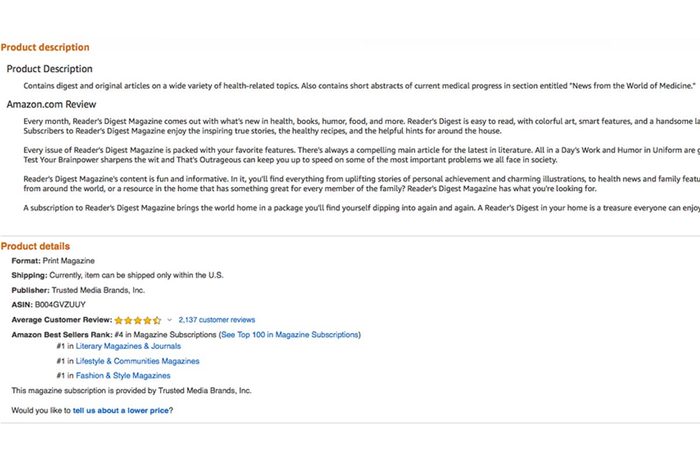
Pay attention to the product page
“A nonsense brand name is a typical feature of large Chinese trading companies,” says Rachel Johnson Greer, founder and principal consultant at Cascadia Seller Solutions, an e-commerce marketing agency focused on growing brands using the Amazon channel. “‘Stywvoe’ is a collection of letters intentionally organized this way to get the trademark through the USPTO because Amazon requires brands to be trademarked legally.” She also advises Amazon buyers to look for odd syntax, punctuation, and grammatical errors, as these can all be signs of a company selling fraudulent or low-quality products from outside the United States. When you’re shopping on other sites, you also need to be careful. These are the 12 signs that shopping site is fake—and about to steal your money.
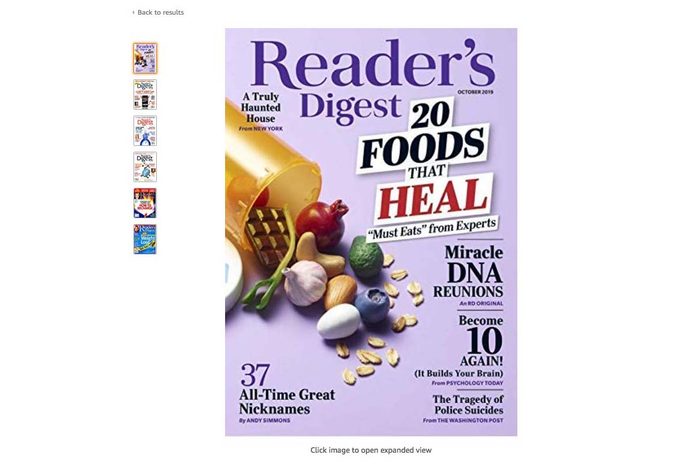
Check the quality of the images
While reviewing the page’s content, pay attention to photo quality as well. “A legitimate seller will have access to the products they are selling, so they should have a variety of high-quality images,” says Jared Scott, an Amazon expert at Effective Spend. To analyze the quality of the photos that a seller is using, Scott advises moving your mouse over the images and seeing if you can zoom in on the picture. “High-resolution shots will allow you to examine the quality of the product for yourself,” he explains. “Amazon sellers that use a single, low-resolution shot for their listings should raise some red flags for shoppers.”
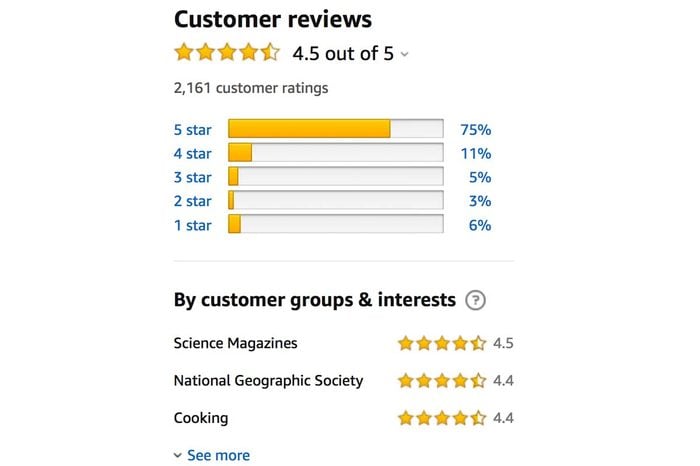
Read the reviews
It sounds simple enough, right? But when people are excited about a product or already know they want it, they might not bother with this step. This is a mistake because the reviews section of a product can tell you a lot, particularly when it comes to inexperienced sellers. Too few reviews might indicate a recently launched product or a seller who hasn’t had time to build a reputation on Amazon. And bad reviews are a surefire sign to stay away. “By reading reviews from other customers, you can get a sense of how the product is being received,” Kreitzer says. “For example, if multiple people are claiming they never received the product, that would be a sign the seller might be untrustworthy.” Sometimes reviews are worth reading for a whole other reason. For a good laugh, check out the funniest Amazon reviews of all time.
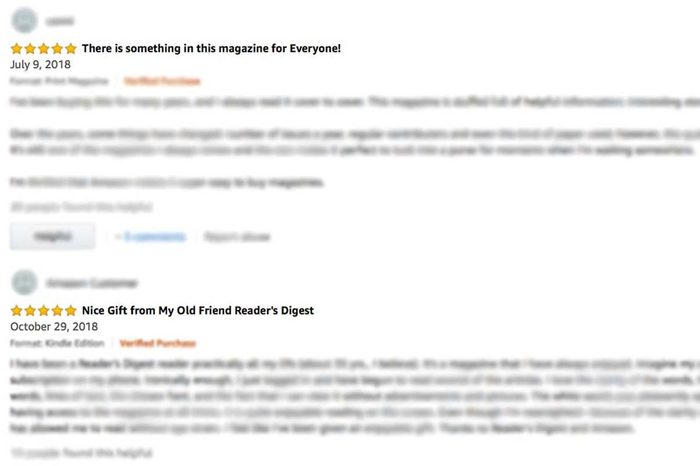
Be skeptical of review dates
Good reviews don’t necessarily mean you’re in the clear either, according to Craig Anderson of Appliance Analysts. “If almost all the positive reviews for an item are within a few days or weeks of each other, that’s a red flag,” he says. “Often these reviews are bought and ‘delivered’ in bulk, suddenly flooding a product with positive feedback.” Checking for this is simple enough. Simply sort through user reviews by date, then check whether there’s a big clump of positive reviews published around the same time. Also, did you know Amazon has a new national health care, Amazon Care?

Make sure the reviews match the actual product
Next up in your review analysis: Ensure the product that is being mentioned in the reviews is the same one being sold. “Storefronts can change products they’re selling but keep the same product page,” explains Heather Lovett, public relations director of Deal News. “This could result in sort of gaming the system. Maybe they sold a pack of pencils for cheap and received a bunch of five-star reviews, but then they changed the product to a plastic helicopter that breaks on first use.” Most reviewers mention the product in their write-ups, so a quick glance at the reviews should tell you if the seller has pulled a switch-a-roo. For some trusted products, check out these 15 hidden gems on Amazon you’ll wish you owned this whole time.
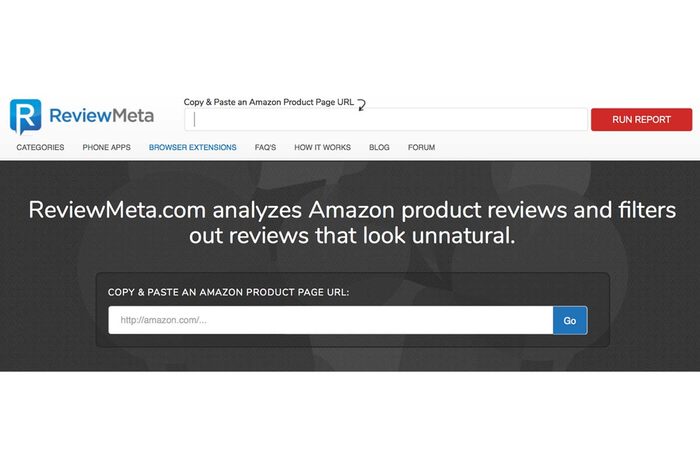
Vet the reviewers
The last step in your reviewer analysis: keeping an eye out for fake reviews as you scan through all of those five-star ratings. “It’s easy to game Amazon’s review system with fake, artificial, and manipulated reviews,” says Derek Hales, editor-in-chief of Modern Castle. Signs of a fake review might be those that use only one or two words, like “Fantastic!” or “Great product!” You can also click on a reviewer’s profile to see what their review history looks like. “We use Review Meta to analyze reviews and help us better understand if something sketchy is going on,” Hales adds.
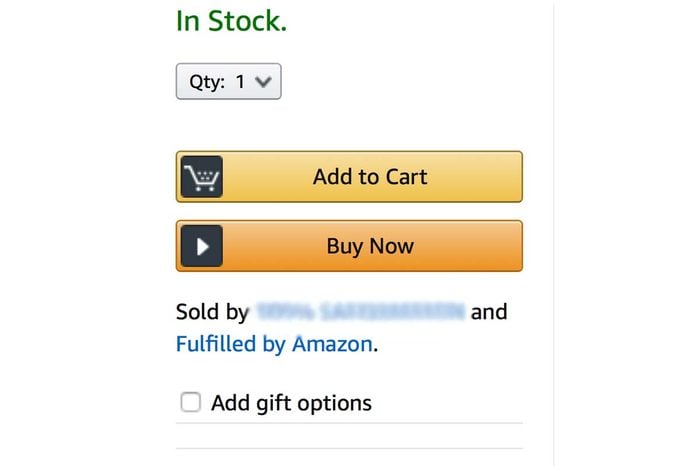
See if the seller makes the product
“Whenever possible, buy directly from the brand or manufacturer of the product, rather than some random seller,” advises Loren Richter, founder and CEO of BlueBiology. “Otherwise, you run the risk of buying counterfeit products or products that aren’t under warranty.” Verifying who you’re buying from is as simple as looking at the “sold by” section in your buy box. These 34 things you should always buy on Amazon are a great place to start.
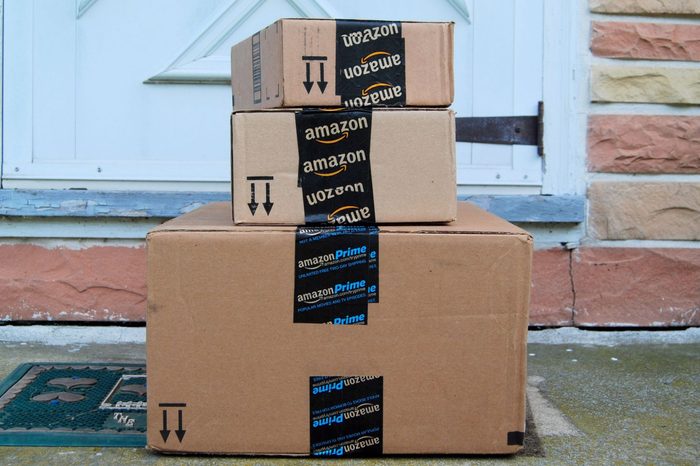
Pay attention to shipping times
Most Amazon Prime members are used to having their purchased products delivered within a day or two. But every once in awhile, they’ll come up against a product that eschews that promise. “It is common to see third-party sellers with shipping times that range from three to four weeks,” explains Susan Harris, owner of Rooted Mama Health. “This is incredibly long and typically means that the seller is shipping the product directly from a warehouse in China. This is a common practice but typically results in poor-quality products and a poor experience for the buyer.” Amazon also produces its own items, which should be a safe bet.
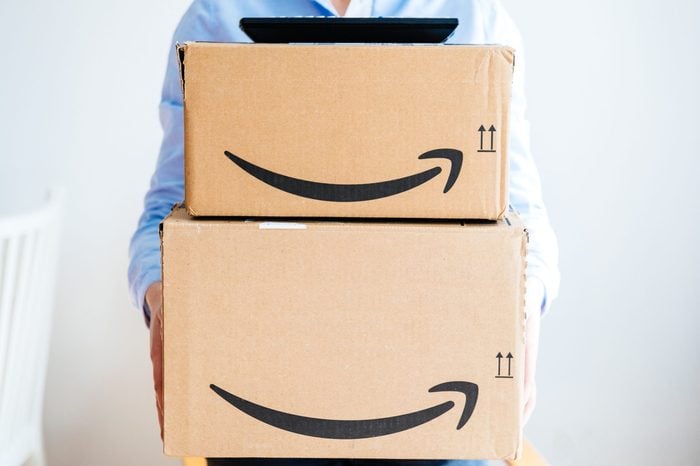
Note whether the product or seller has Amazon’s seal of approval
“When it comes to common marketplaces like Amazon who retail in third-party suppliers, look for the sellers they have faith in,” advises Brandon Kovach, founder of the Kovach Companies Inc. “If [the seller] offers Prime or one-day shipping, then you know this is an established market partner for these vendors and they have been vetted.” By checking reviews and working with Amazon-vetted sellers, he adds, “you minimize the risk of being burned.” Of course, for buyers, membership always comes with privileges…but not everyone knows about these 17 Amazon Prime benefits.
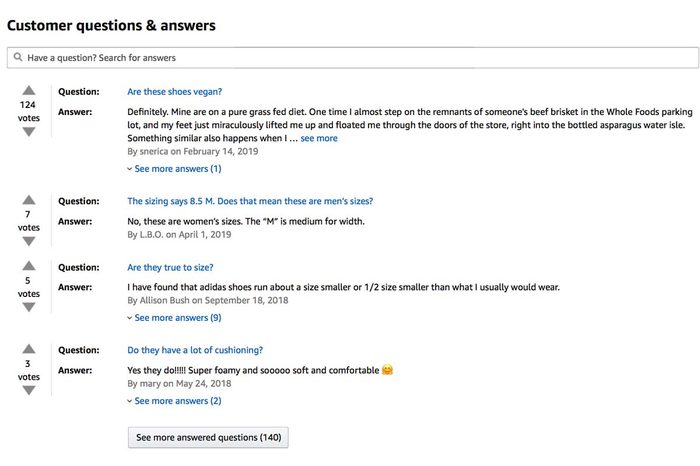
Check the answered questions
Anderson advises buyers to look beyond the reviews. “While reviews affect a product’s ranking, the user-generated question and answer sections don’t,” he explains. “This means they’re only ever used by real people giving real feedback.” You can generally find these asked and answered questions above the reviews section. “Look for a healthy amount of questions being asked and helpful responses given by both satisfied customers and the seller themselves,” he says. “If there’s a ton of positive reviews but barely a single question asked about the product? Suspicious.”
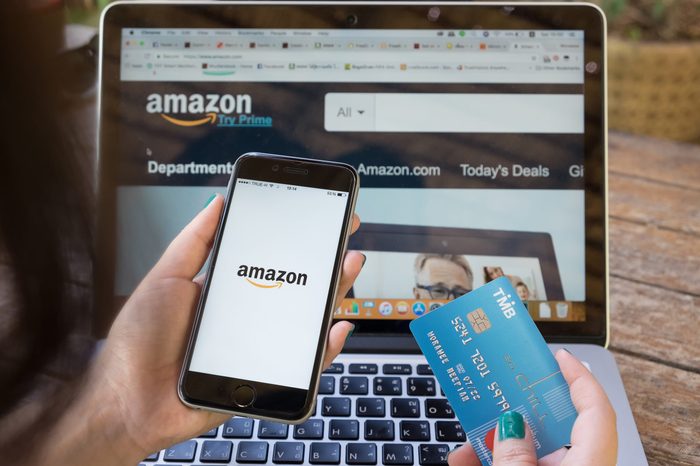
Be wary if the prices have been inflated, then discounted
“Overinflated list prices are another thing to watch out for,” says Lovett. “If something like a plastic garbage can has a list price of $5,000 and it’s been marked down to $10, odds are the seller is trying to make their listing more appealing by showing a higher discount.” Still, price reductions aren’t always a sign to run. Older products, for example, sometimes receive price drops when newer models are introduced. “A third-party seller may choose to use the original list price so it looks like the product is discounted,” Lovett adds. “It’s still a little sketchy, but more understandable than a crazy markup like the garbage-can example.” Of course, everyone wants a good deal, but it’s much smarter and safer to try these 12 money-saving Amazon tricks most people don’t know about.

When in doubt, buy from someone else
If you’re feeling overwhelmed by the potential for getting scammed, Jon Derkits of 3PM Solutions says there are third-party extensions that can help you vet Amazon sellers and products. And as a former Amazonian who served as Amazon.ca’s leader for Customer Trust and Fraud Prevention, he would know. “There are a number of browser extensions that provide insight into the seller, the product, and the reviews. Use them,” he says. His recommendations?
- ReconBob, which will give you a sense of the seller’s history
- The Keepa widget, which inspects product prices and determines not only whether you’re getting a good deal but also if the product has an unusual price history
- And ReviewMeta and FakeSpot, which gauge the authenticity of customer reviews
“Doing [due] diligence on the seller, product, and reviews may seem like a lot of work for a $20 purchase,” says Derkits, “but these extensions make it super easy and greatly reduce your risk of getting a bad product.” Next, find out which 13 things you can get for free on Amazon. (Yes, you read that right—for free.)
